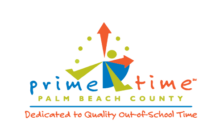9:00 am - 11:00 am
It was a great experience, I learned a lot. It gave me the opportunity to see some areas where I need to work to better my leadership and my program!
Lorena DAfterschool Professional
Cooperative Learning: Advanced – VIRTUAL
Prerequisite: Cooperative Learning Basics, Cooperative Learning: Level Up
Cooperative Learning: Advanced builds upon the skills learned in the first two Cooperative Learning training experiences. Practitioners will explore how utilizing cooperative grouping strategies may look different across age groups, and various content area. Participants will also walk away with more tools to implement the cooperative learning methods in their program to nurture youth leadership, build community and keep things fun.
Upon successful completion of this training, the participant will earn 2.0 clock hours (.2 CEUs) of training.
Training Objectives
Participants will:
- Review Cooperative Learning Basics and Level Up.
- Compare and contrast how cooperative learning strategies look different across age groups.
- Utilize a variety of group forming strategies (Group Formers) and group work structures (Group Structures).
- Create a cooperative learning agenda.
Core Knowledge, Skills, and Competencies (CKSC) Addressed
Learning Environment and Curriculum
Physical Environment and Activities:
D. Creates engaging, physically, emotionally safe, and inclusive environments to encourage play, exploration, and learning across developmental domains. [Apply]
H. Articulates evaluates, and/or applies current theories, research, resources, and policies related to the design of curriculum and learning environments. [Apply]
Physical, Social Emotional, and Cognitive Development
E. Is responsive and encourages learning through questions, active listening, problem-solving activities, and conversations.
I. Uses contextualized teaching strategies to provide children and youth multiple entry points to an activity based on their current knowledge and abilities.
Language and Communication Development
C. Encourages children and youth to communicate in a variety of ways.
F. Develops and integrates strategies for integrating language and communication development activities into all curricular areas.
Relationships and Interactions with Children and Youth:
Enhancing Group Experiences
C. Plans and guides group activities to teach children and youth cooperation and collaboration.
F. Designs effective group activities and interactions based on current research, curriculum, and child/youth needs and input.
G. Utilizes group management strategies based on theories of child and youth development.
Youth Engagement, Voice, and Choice
C. Works with young people to create an environment that offers various opportunities for youth leadership and input.
D. Promotes and supports child-initiated and youth-led planning and learning.
Primary QIS Scales Addressed
I. Solid Organizational Framework
I-E. Creating Safe Spaces: Staff provide a safe and welcoming environment.
II. Supportive On-going Relationships
II-H. Scaffolding Learning: Staff scaffold tasks for optimal learning.
II-J. Active Learning: Activities support active engagement.
III. Positive and Inclusive Environment
III-L – Fostering Teamwork: Staff provide opportunities to collaborate and work cooperatively with others.
III-M – Promoting Responsibility and Leadership: Staff provide young people with opportunities to grow in responsibility and leadership.

